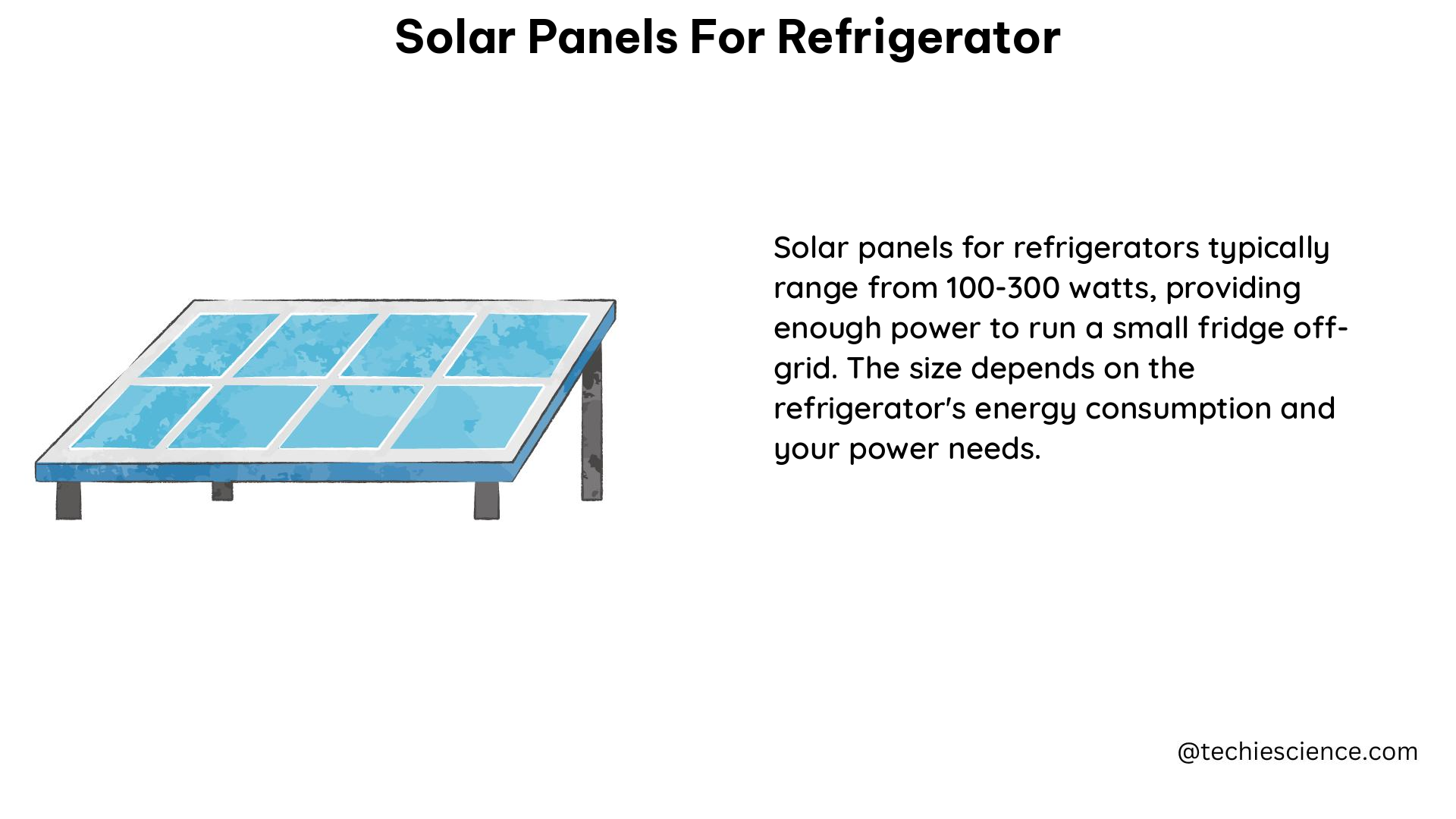Harnessing the power of the sun to run your refrigerator is a sustainable and cost-effective solution, but it requires careful planning and consideration of various technical factors. In this comprehensive guide, we’ll delve into the specifics of selecting and installing solar panels to power your refrigerator, ensuring you have all the necessary information to make an informed decision.
Determining Your Refrigerator’s Energy Consumption
The first step in powering your refrigerator with solar panels is to understand its energy consumption. A typical refrigerator consumes approximately 250 kWh of electricity per year, but this can vary depending on the model, size, and efficiency of the appliance. To calculate the wattage required, you’ll need to multiply the voltage of the refrigerator by the amps it consumes. For example, a refrigerator that uses approximately 13 amps would require 13 x 120 = 1560 watts of power.
Selecting the Right Solar Panels

Once you’ve determined the energy requirements of your refrigerator, you can start selecting the appropriate solar panels. The key factors to consider are:
Power Output
The power output of a solar panel is measured in watts and indicates the amount of electrical power the panel can generate under standard test conditions. For a refrigerator that requires 1560 watts, you would need to install a combination of solar panels that can collectively produce at least this amount of power.
Voltage
The voltage of a solar panel is measured in volts and represents the electrical potential difference between two points in the panel. This voltage must be compatible with the voltage requirements of your refrigerator and other system components.
Current
The current of a solar panel is measured in amperes and indicates the rate of flow of electrical charge through the panel. This factor, along with the voltage, determines the overall power output of the solar panel.
Efficiency
The efficiency of a solar panel is measured as a percentage and represents the amount of sunlight the panel can convert into electrical energy. Higher efficiency panels will generally require less physical space to generate the same amount of power.
Size and Weight
The size of a solar panel is measured in square feet and indicates the physical space it occupies, while the weight is measured in pounds and represents the load it adds to the mounting system. These factors are important when considering the available space and structural support for your solar installation.
Calculating the Number of Solar Panels Needed
To determine the number of solar panels required to power your refrigerator, you’ll need to divide the total wattage required by the wattage of each individual solar panel. For example, if you’re using 200-watt solar panels, you would need (1560 watts / 200 watts) = 7.8 solar panels. Since you can’t have a fraction of a solar panel, you would need to round up to the nearest whole number, which is 8 solar panels.
It’s important to note that the number of solar panels needed may vary depending on the efficiency of the panels and the amount of sunlight your location receives. Areas with fewer peak sun hours may require more solar panels to generate the same amount of power.
Portable Power Stations for Backup Power
To ensure uninterrupted power supply during unexpected power outages or blackouts, you can consider using a portable power station, such as the Jackery Explorer 2000 Plus Portable Power Station. This type of device can charge a large refrigerator (500W) for up to 3.4 hours, providing a reliable backup power source.
Installing Solar Panels for Your Refrigerator
To install solar panels for your refrigerator, follow these steps:
- Determine the refrigerator’s energy consumption and the number of solar panels needed to power it.
- Purchase the required number of solar panels, an inverter, a charge controller, and a battery.
- Install the solar panels on a roof, wall, or the ground, depending on the system’s requirements and the available space.
- Connect the solar panels to the charge controller and the battery.
- Connect the inverter to the battery and the refrigerator.
- Test the system to ensure it is working correctly.
By following these steps, you can successfully install solar panels to power your refrigerator and enjoy the benefits of renewable energy.
Conclusion
Powering your refrigerator with solar panels is a practical and environmentally-friendly solution that can provide long-term cost savings and energy independence. By understanding the technical specifications of solar panels and following the step-by-step installation process, you can create a reliable and efficient solar-powered refrigeration system for your home or off-grid living.
References
- Calculations for a Grid-Connected Solar Energy System – University of Arizona Cooperative Extension
- How Many Solar Panels Do I Need to Run A Refrigerator – Jackery
- Calculating Solar Requirements for a Refrigerator – Electronics Stack Exchange
- How Many Solar Panels Do I Need to Power a Refrigerator? – EcoFlow Blog

The lambdageeks.com Core SME Team is a group of experienced subject matter experts from diverse scientific and technical fields including Physics, Chemistry, Technology,Electronics & Electrical Engineering, Automotive, Mechanical Engineering. Our team collaborates to create high-quality, well-researched articles on a wide range of science and technology topics for the lambdageeks.com website.
All Our Senior SME are having more than 7 Years of experience in the respective fields . They are either Working Industry Professionals or assocaited With different Universities. Refer Our Authors Page to get to know About our Core SMEs.